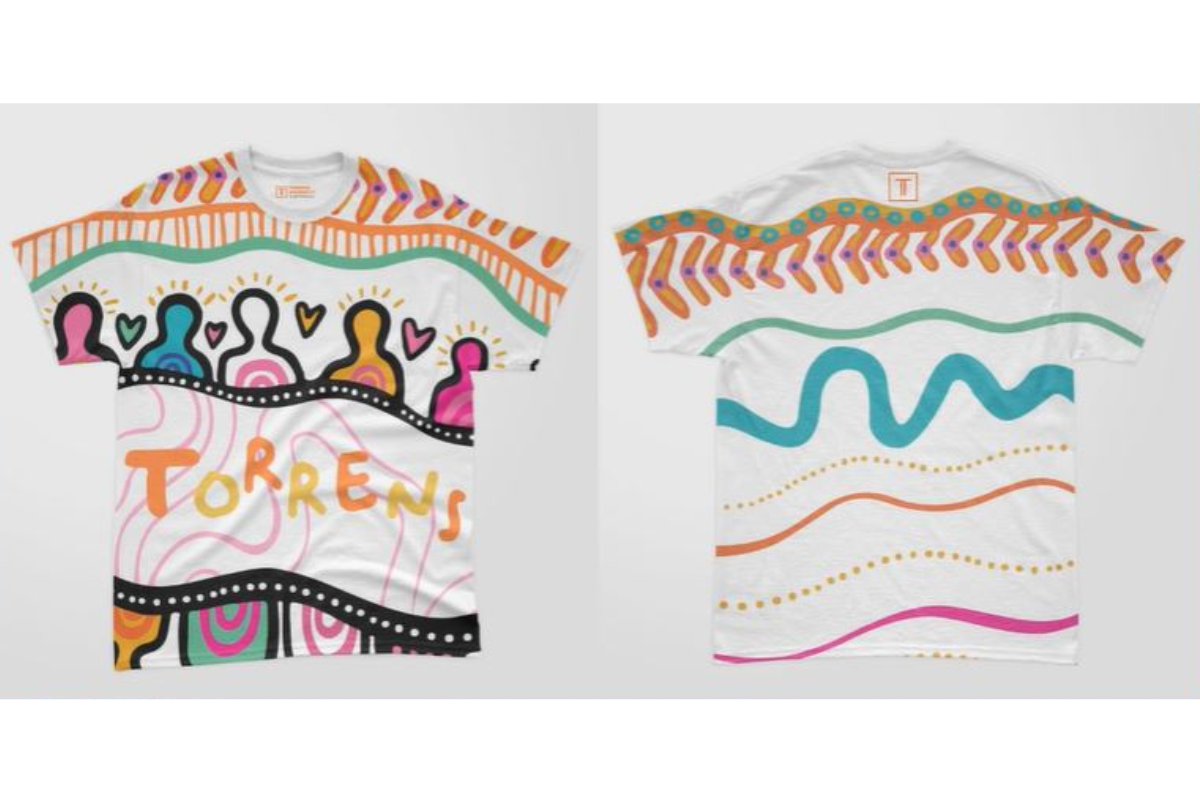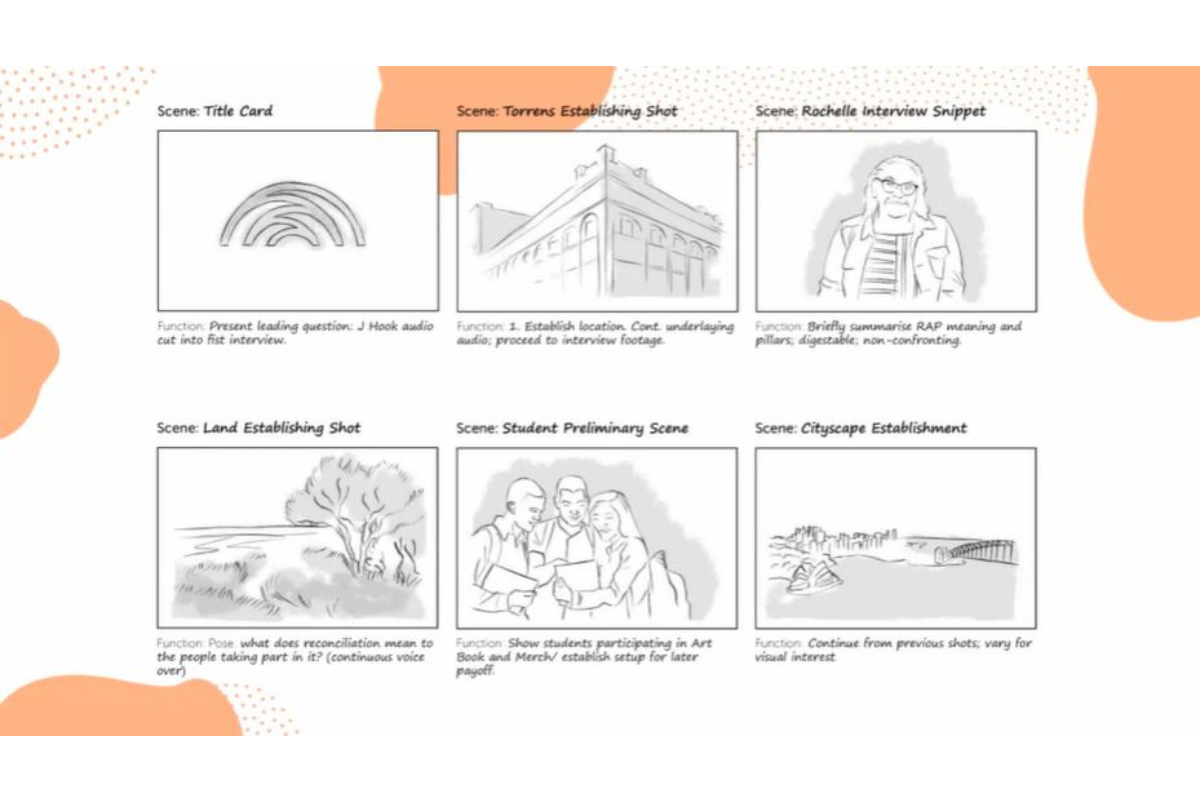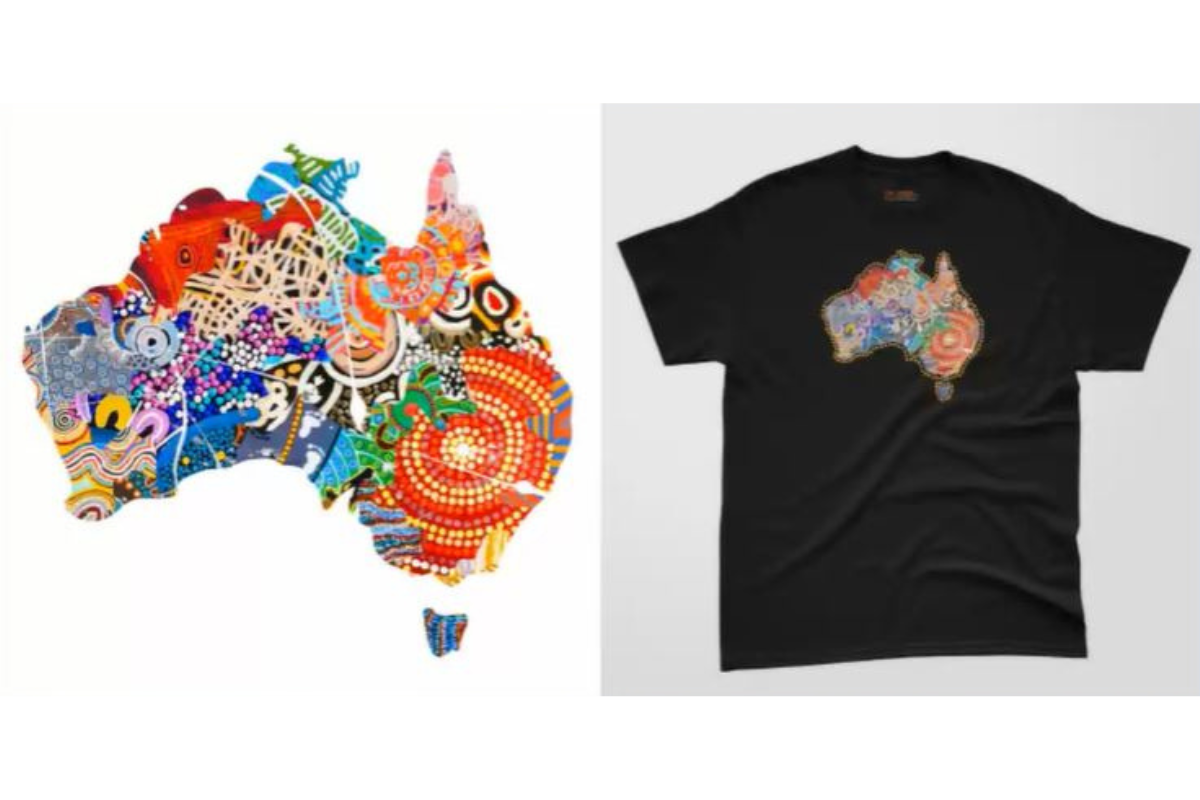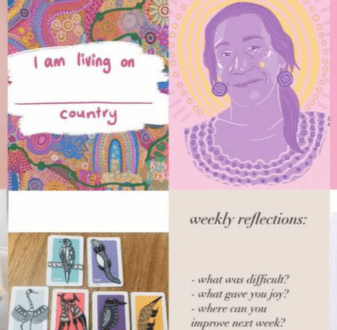Torrens University Australia’s Reconciliation Action Plan (RAP) is about more than just respect and acknowledgement, it is about action. It’s about championing the Aboriginal and Torres Strait Islander peoples’ perspectives by carving pathways, creating opportunities and making space.
The primary goal of the Work Integrated Learning project was to explore innovative ways that students can connect with the RAP and create opportunities to increase student awareness. The design outcomes were varied, including clothing designs, animations, artwork, cultural workshops and interactive learning apps.

Building cultural capability through Indigenous mentorship
The project was called the ‘Reconciliation in Action – Student Engagement Program’ and for 12 weeks students considered what students would want in this cultural understanding space.
Mentored by Aboriginal and Torres Strait Islander Liaison, Rochelle Morris, and lectured by Melinda Kapp, Learning Facilitator, Design and Creative Technology, the students grew their awareness, depth of knowledge and understanding of First Nations culture.
Embracing the challenges to further the conversation
Rochelle said the brief was as much about the students having their own personal journey of discovery, as it was about producing potential solutions.
“It’s not surprising that the students felt challenged at first. As a nation we struggle with discussing First Nations culture,” said Rochelle. “I’m proud of how their confidence escalated over the course of this project.”
“Talking with universities across the board, the one key area they have mentioned is that they've found it difficult to engage with students around their RAPs and what it actually means from the student perspective,” said Rochelle.
The opportunity for the students to utilise their design skills to further the conversation with other students was a challenge they embraced.
“In 12 weeks, we can give them permission and an opportunity to step up and share views, share values and see what part they can play as designers to make a positive impact,” said Melinda.
“They feel they have been given permission to have a voice,” explained Melinda. “It's about getting them into that observational and awareness mindset and also a bit of bravery and courage.”
The students acknowledged that the conversations under the guidance of Rochelle “liberated them of their worries.”
“Normally in an academic environment, we don't get them to think about themselves,” said Melinda. “That has been inspiring for some, and really challenging for others.”

What does the Reconciliation Action Plan mean to the student community?
The students reflected on what the project meant to them, how they navigated obstacles, what it means for students to engage in the reconciliation space, and why they believe it is important to have these discussions.
“I would say that the RAP is a series of steps that we as the Torrens community need to take in order to reconcile the treatment of Aboriginal cultures,” said student James Thomas. “The goal of this project was to generate engagement, because these things can be sort of easily swept under the rug and go unnoticed. We wanted to drive student interest.”
Brianna Short said it was a valuable lesson to be open and unashamed of what she didn’t’ know going into this journey.
“It was a definitely a wave because it is such an intense topic. At the beginning of the trimester, I was a little bit embarrassed about how little I knew,” said Brianna Short. “I think it was accepting that fact that it's okay to not know and it's okay to not understand things and take on knowledge and learn from it.”
“As designers, I think it was really important for us to all learn how to take on a highly culturally sensitive topic and then be proud to communicate it to other people, we should all be proud of how far we've come,” added Brianna.
“One of the challenges for me personally was to understand what I was allowed to ask, what I shouldn't be afraid to ask, whether that be appropriate or offensive,” said Isabella Matutini.
“I really like the fact that we've been asked for our opinions, our views and how we can move the Reconciliation Action Plan forward. It's really encouraged us to think about how we perceive social justice issues,” said Ella Richards. “That's the power of the student perspective, the new ideas and the fresh outlooks to propel this project forward.”
Despite its challenges and initial intimidation of the brief, James Thomas said it was Rochelle’s approach to “always ask” and “nothing is off limits” that really helped the students create content that will have a large impact.
“This class has been one of the most interactive student groups that I have seen in any online class. Not only looking at it as a way to reconcile and to understand the issue, but to grow as a designer and honestly as a person,” explains James. “The collaboration and the community that this brief has helped build has been amazing.”

We are on the right track
“I really appreciated the students’ bravery and vulnerability throughout this journey,” said Rochelle.
“It gives me the comfort to know we are on the right track to support students through this kind of process and consider how we can enact and influence from a student perspective,” said Rochelle. “It's important in the reconciliation space and with our next stages of our RAP program.”




.png?rev=5cbecfb2b7c742e9b55997d971b951d8)